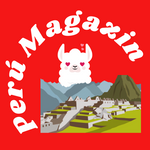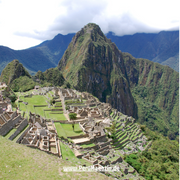
Peru , a country rich in cultural heritage and scenic diversity, is home to a fascinating history spanning millennia. From the ancient pre-Inca civilizations to the modern republic, Peru has undergone a long and complex evolution that has made the country what it is today.
1. Pre-Inca period:
The history of Peru begins long before the arrival of the European conquerors. In the pre-Inca period, important civilizations flourished in what is now Peru and neighboring regions. One of the best known is the Caral Supe culture, whose origins date back to around 3000 BC. BC. The Caral-Supe civilization was one of the earliest urban societies in the Americas and left impressive archaeological remains such as the city of Caral, considered one of the oldest cities in the Western Hemisphere.
Other important cultures of this period were the Chavín culture, the Paracas culture and the Nazca culture. Each left behind distinctive cultural artifacts and impressive works of art, including the famous Nazca Lines, which represent mysterious geoglyphic formations in the Nazca Desert.
2. The Inca Empire:
The Inca Empire, which existed from approximately 1438 to 1533, was the largest and most powerful empire in the pre-Columbian New World. The Inca, an indigenous people from the Andes of Peru , conquered a vast territory spanning parts of Ecuador, Chile, Bolivia, Argentina and Colombia. Under Inca rule, Peru experienced a period of peace and cultural prosperity.
The Incas are known for their impressive architectural achievements, including the majestic city of Machu Picchu, considered one of the New Seven Wonders of the World. Other important cities of the Inca Empire included Cusco, the empire's capital, and the city of Sacsayhuamán, famous for its massive stone walls.
The fall of the Inca Empire began with the arrival of the Spanish conquistadors led by Francisco Pizarro in 1532. Although the Incas fought bravely, they ultimately could not stand against the superior technology and diseases of the Europeans. In 1533, the Inca ruler Atahualpa was captured and later executed, marking the end of the Inca Empire.
3. The Spanish Colonial Period:
The conquest of Peru by the Spanish marked the beginning of Spanish colonial rule, which lasted almost 300 years. Under Spanish rule, Peru became an important part of the Spanish colonial empire in the Americas. The Spanish built cities, introduced the Catholic religion and forced the indigenous population into forced labor in mines and plantations.
The colonial period was characterized by exploitation, oppression and cultural assimilation. Many indigenous cultures and languages disappeared during this time, and most Peruvians became slaves of the Spanish crown.

4. Struggle for Independence:
In the late 18th and early 19th centuries, independence movements against Spanish colonial rule began across Latin America. Peru was no exception, and the struggle for independence lasted several years. Leaders such as José de San Martín and Simón Bolívar led Peruvian troops to victory against Spanish forces.
On July 28, 1821, Peru officially declared independence and became a sovereign republic. This day is now celebrated as Peruvian Independence Day and is a national holiday in Peru .
5. The Republic:
After independence , Peru began a new era as a sovereign state. However, the young republic faced numerous challenges, including political instability, economic problems and social inequality. Military coups and government reshuffles were not uncommon in the following decades, and the political landscape remained turbulent.
Throughout the 19th and 20th centuries, Peru experienced periods of economic prosperity, followed by periods of recession and social discontent. Despite its rich natural resources, Peru remained a developing country with a large gap between rich and poor.
6. The internal conflict:
In the 1980s, armed conflict broke out in Peru between the Peruvian government and various communist guerrilla groups, including the Shining Path and the Tupac Amaru Revolutionary Movement. The conflict resulted in serious human rights violations, including massacres and enforced disappearances, as well as the destruction of entire communities.
The internal conflict left deep wounds in Peruvian society and led to deep divisions between urban and rural areas and between different ethnic groups.
7. Recent History:
Since the 2000s, Peru has experienced some economic successes, including stable economic growth and a reduction in poverty. The government has made efforts to attract investment and improve the country's infrastructure.
However, many challenges remain, including social inequality, corruption and environmental degradation. Mining in particular, which plays an important role in the Peruvian economy, has had a negative impact
on the environment and the health of local communities.
Peru 's political landscape remains turbulent, with various political currents and periods of instability. The Peruvian people continue to fight for a fairer society and sustainable development for the country.
Peru 's history is a complex mix of indigenous cultures, colonial rule, struggles for independence and social challenges that continue to shape the country today. Despite the numerous challenges , Peru remains a fascinating country with a rich cultural tradition and a vibrant history.








